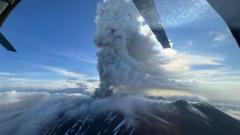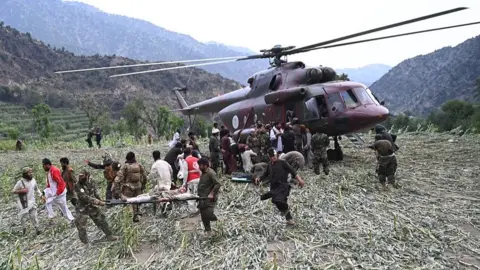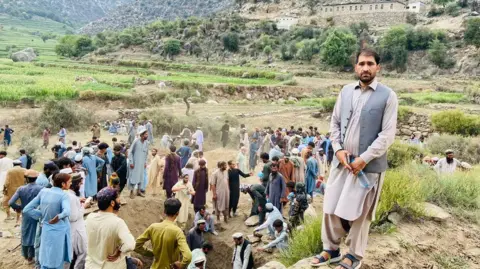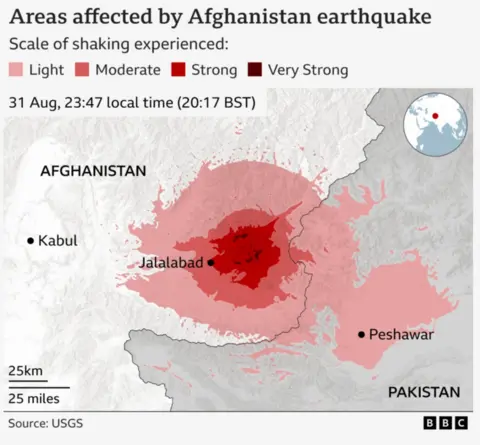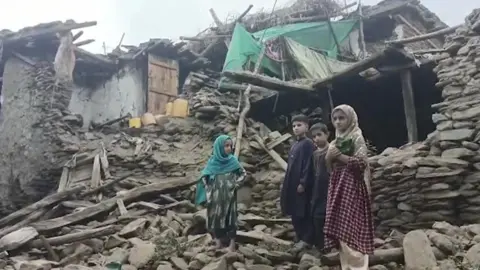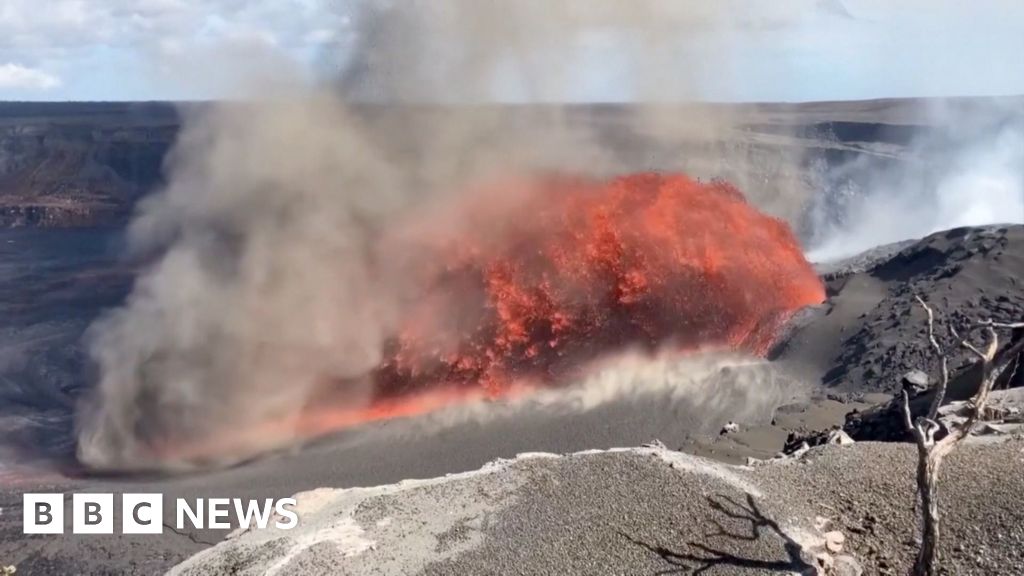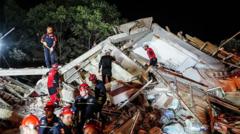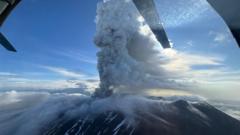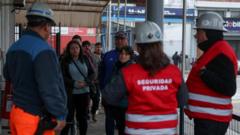In a remarkable geological event, the Krasheninnikov Volcano in Kamchatka, Russia, has erupted for the first time in over five centuries, casting a hefty ash plume that reached altitudes of six kilometers (3.7 miles) into the atmosphere. This sudden activity coincides with a series of strong earthquakes, including a significant 8.8 magnitude quake that occurred the previous week.
According to the Russian emergency ministry, there are currently no immediate threats to nearby populated areas from the eruption. However, the seismic activity has led to renewed tsunami warnings in three different regions of the Kamchatka Peninsula. Just hours after the volcanic eruption, a further 7.0 magnitude earthquake struck the Kuril Islands, raising concerns of possible waves measuring up to 18 centimeters (7 inches).
Experts in Russia are investigating the interconnection between the recent volcanic activity and the earthquakes, emphasizing that the region may continue to experience aftershocks. The last documented volcanic eruption of Krasheninnikov dates back to the 15th century, and authorities speculate that the dynamics of the recent earthquakes played a role in its awakening.
The Kamchatka Peninsula, known for its stunning natural beauty and diverse wildlife, is also part of the "Pacific Ring of Fire," a region notorious for its frequent seismic events. As the local population remains on alert for further geological activity, experts continue to monitor the situation closely.
According to the Russian emergency ministry, there are currently no immediate threats to nearby populated areas from the eruption. However, the seismic activity has led to renewed tsunami warnings in three different regions of the Kamchatka Peninsula. Just hours after the volcanic eruption, a further 7.0 magnitude earthquake struck the Kuril Islands, raising concerns of possible waves measuring up to 18 centimeters (7 inches).
Experts in Russia are investigating the interconnection between the recent volcanic activity and the earthquakes, emphasizing that the region may continue to experience aftershocks. The last documented volcanic eruption of Krasheninnikov dates back to the 15th century, and authorities speculate that the dynamics of the recent earthquakes played a role in its awakening.
The Kamchatka Peninsula, known for its stunning natural beauty and diverse wildlife, is also part of the "Pacific Ring of Fire," a region notorious for its frequent seismic events. As the local population remains on alert for further geological activity, experts continue to monitor the situation closely.

